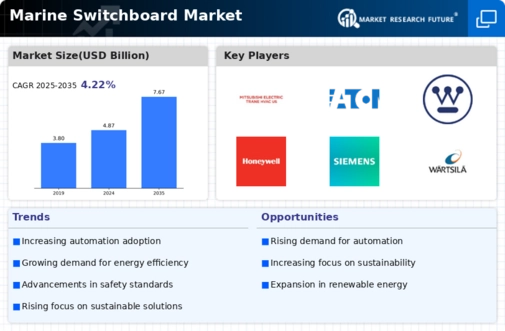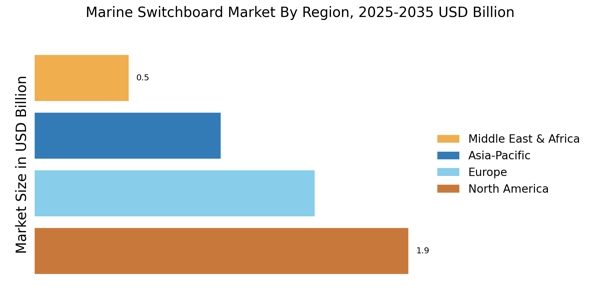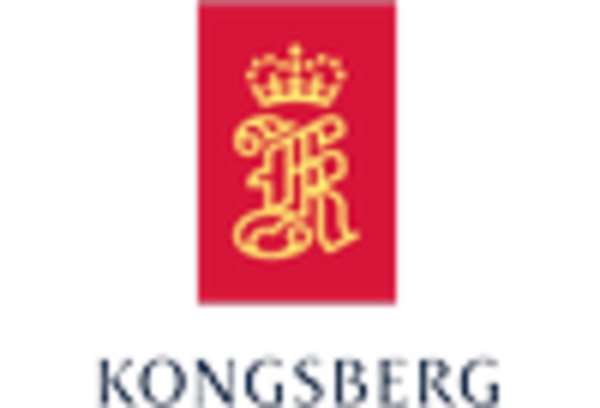Expansion of Maritime Infrastructure
The Marine Switchboard Market is benefiting from the expansion of maritime infrastructure, including ports and shipyards. As countries invest in upgrading their maritime facilities to accommodate larger vessels and improve operational efficiency, the demand for advanced electrical systems, including marine switchboards, is expected to rise. In 2025, the global investment in port infrastructure is projected to reach approximately 30 billion USD, creating a favorable environment for marine switchboard manufacturers. This expansion not only enhances the operational capabilities of existing fleets but also encourages the construction of new vessels equipped with state-of-the-art electrical systems, thereby driving growth in the marine switchboard market.
Growth in Renewable Energy Integration
The Marine Switchboard Market is poised for growth as the integration of renewable energy sources into marine operations becomes increasingly prevalent. With a global push towards sustainability, many shipping companies are exploring hybrid and fully electric vessels. This shift necessitates advanced marine switchboards capable of managing diverse energy inputs, including solar and wind energy. In 2025, it is estimated that the market for hybrid marine vessels will reach approximately 15 billion USD, highlighting the potential for marine switchboards to play a critical role in this transition. The ability to efficiently manage energy flow and enhance vessel performance positions marine switchboards as essential components in the evolving maritime landscape.
Increasing Demand for Marine Transportation
The Marine Switchboard Market is experiencing a notable surge in demand due to the increasing reliance on marine transportation for global trade. As economies expand, the need for efficient shipping solutions becomes paramount. In 2025, the shipping industry is projected to transport over 11 billion tons of goods, necessitating advanced electrical systems, including marine switchboards, to ensure operational efficiency and safety. This trend indicates a robust growth trajectory for the marine switchboard sector, as shipbuilders and operators seek to enhance their fleets with modern electrical infrastructure. Furthermore, the integration of smart technologies in marine switchboards is likely to improve energy management and reduce operational costs, further driving market growth.
Technological Innovations in Electrical Systems
The Marine Switchboard Market is significantly influenced by ongoing technological innovations in electrical systems. The advent of digital switchboards, which offer enhanced monitoring and control capabilities, is transforming the way marine operations are conducted. These innovations not only improve safety and reliability but also facilitate compliance with stringent regulations. In 2025, the market for digital marine switchboards is expected to grow by over 20%, driven by the demand for smarter, more efficient electrical solutions. As ship operators increasingly adopt these advanced systems, the marine switchboard market is likely to expand, reflecting the industry's commitment to modernization and operational excellence.
Regulatory Pressures and Compliance Requirements
The Marine Switchboard Market is also shaped by regulatory pressures and compliance requirements that govern maritime operations. As environmental standards become more stringent, ship operators are compelled to upgrade their electrical systems to meet these regulations. This trend is particularly evident in regions where emissions targets are being enforced. In 2025, it is anticipated that compliance-related investments in marine electrical systems will exceed 10 billion USD, underscoring the importance of marine switchboards in achieving regulatory compliance. Consequently, manufacturers are focusing on developing switchboards that not only meet current standards but are also adaptable to future regulations, ensuring long-term viability in the market.


















Leave a Comment